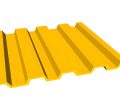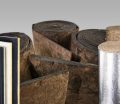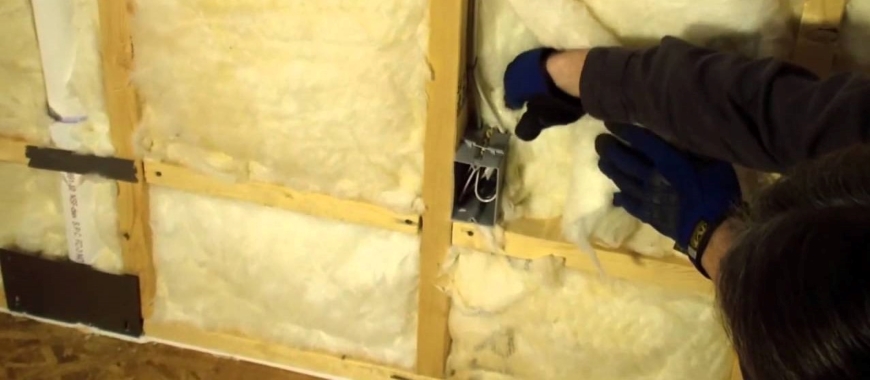
Installing fiberglass insulation around electrical outlets is a critical task for maintaining energy efficiency and ensuring safety in your home or building. Properly insulating these areas helps prevent air leaks, reduces drafts, and maintains the R-value of the insulation, which is essential for effective thermal resistance. When dealing with electrical outlets on exterior walls, special care must be taken to avoid common issues like insulation compression and air infiltration. Spray applied fiberglass insulation can be particularly beneficial in these situations, as it can conform to the contours of the outlet boxes, ensuring a snug fit. By following the correct techniques and understanding the challenges involved, you can effectively insulate around electrical outlets, enhancing the overall performance of your insulation system. Fiberglass insulation around electrical outlets is safe, non-flammable, doesn’t conduct electricity, and won’t damage wires when properly installed.
Simplifying Your Life: Key Functionalities
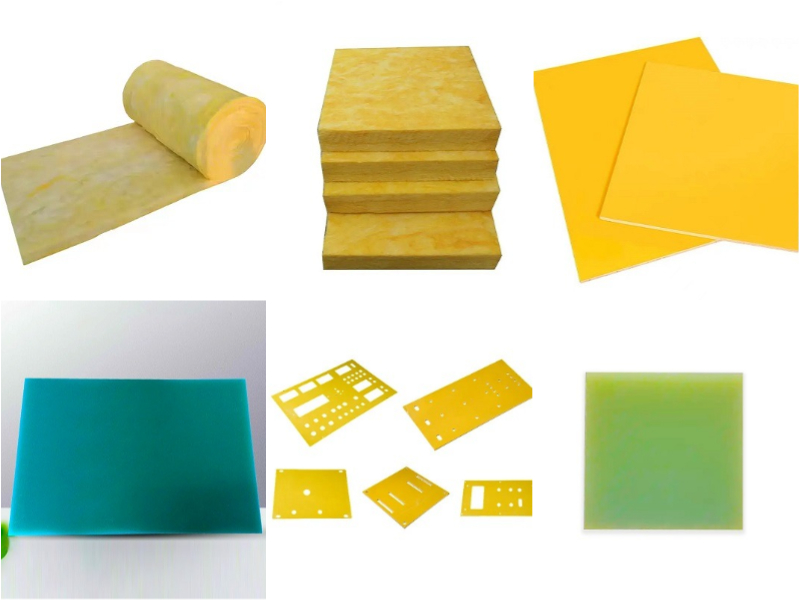
| Attributes | Details |
|---|---|
| Place of Origin | Hebei, China |
| Brand Name | GangLong Fiberglass |
| Product Name | Fiberglass Insulation |
| Material | Fiberglass Reinforced Plastic |
| Processing Services | Bending, Cutting, Forming |
| Tensile Strength | Excellent |
| Color | Customized |
| Size | Customized |
| Length | Customized |
| Width | Customized |
| Thickness | Customized |
| Density | Customized |
| Shape | Customized |
| R Value | R2.3 R2.5 R3.5 R4.0 R4.5 R5.0 R6.0 |
| OEM | Accept |
| Package | Customized according to your needs |
| Sales Unit | Single Item |
| Supply Capacity | 6000 kg/kg/month |
How to Install Fiberglass Insulation Around Electrical Outlets
Properly installing fiberglass insulation around electrical outlets is crucial for maintaining the energy efficiency of your home. However, care should be taken to avoid exposed fiberglass insulation, as it can pose health risks. Ensuring that the insulation is adequately covered helps create a safe and energy-efficient environment.The process requires careful attention to detail to ensure that the insulation is effective without compromising safety or performance. Insulation not only helps in maintaining the desired indoor temperature but also plays a critical role in reducing energy consumption and preventing air leaks.
Electrical outlets, particularly those located on exterior walls, can be challenging to insulate correctly. If the insulation is not installed properly, it can lead to air leaks, reduced insulation performance, and potential safety hazards. In this detailed guide, we’ll explore the best practices for installing fiberglass insulation around electrical outlets, ensuring you achieve the best results for your home.
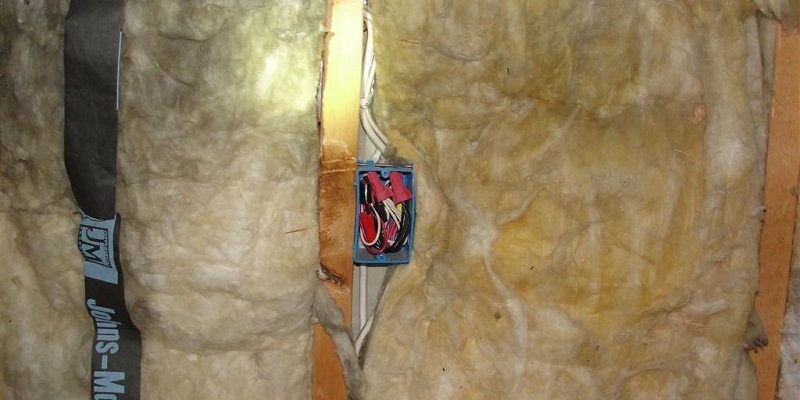
Challenges of Exterior Wall Insulation
Exterior walls pose unique challenges when it comes to insulation. Electrical outlets on these walls are particularly tricky because they can create gaps and air leaks that reduce the effectiveness of the insulation. Understanding these challenges is the first step in addressing them effectively.
Air Leaks and Temperature Differences
One of the primary issues with insulating electrical outlets on exterior walls is the risk of air leaks. These leaks can occur around the outlet box, allowing cold air to enter the home during the winter and warm air during the summer. This not only makes your home less comfortable but also increases your energy bills.
Temperature differences between the inside and outside of the home can exacerbate this problem. If the insulation fiberglass box is not installed properly, it can lead to condensation within the walls, which can cause mold and damage to the structure over time. The key is to ensure that the insulation is snugly fitted around the outlet and that there are no gaps where air can pass through.
Common Solutions for Exterior Insulation
To address the challenges of insulating electrical outlets on exterior walls, several solutions can be employed. The first step is to make sure the insulation is properly cut and fitted around the outlet box. This can be done by carefully measuring and cutting the insulation to fit the exact dimensions of the outlet.
One effective technique is to use foam board insulation around the outlet box. This can help to seal any gaps and prevent air leaks. The foam board can be cut to fit the size of the outlet box and then adhered to the wall cavity, ensuring a tight seal around the outlet. This method is particularly useful for exterior walls where air leaks are more likely to occur.
Another solution is to use expanding foam to fill any gaps around the outlet box. This can be particularly effective in areas where the insulation does not fit perfectly or where there are small gaps that need to be sealed. The expanding foam can be applied around the outlet box, and once it has expanded and hardened, it will create a tight seal that prevents air from passing through.
Installing Fiberglass Insulation Around Electrical Outlets Method
When working with fiberglass insulation around electrical outlets, it is important to ensure the right techniques are used to maintain the performance of the insulation and the safety of the electrical components. Electrical outlets can present a challenge due to the wires running through the wall cavities, but with careful installation, the integrity of the insulation can be preserved. Whether you are dealing with a new installation or retrofitting existing walls, the proper handling of fiberglass insulation is crucial to achieving maximum energy efficiency while protecting your home from fire hazards.
Proper Techniques for Insulating Around Wires
In homes with electrical wiring, special attention must be given to how insulation interacts with these wires. Unfaced fiberglass insulation is commonly used for this purpose because of its excellent thermal resistance and ability to conform to various shapes without losing its insulating properties.
The installation of fiberglass insulation around electrical outlets requires careful planning and execution to ensure that the insulation does not compress around the wires or obstruct electrical components, which could create safety risks or reduce the insulation’s effectiveness.
Splitting and Filleting Insulation
One method for properly installing fiberglass insulation around electrical outlets is known as splitting or filleting the insulation. This involves carefully cutting the insulation to create a space for the wires without compressing the material. Compression can lower the insulation’s R-value, reducing its thermal efficiency.
To perform this technique, you can gently split the fiberglass batt in half along its length and insert one half behind the wires and the other half in front, ensuring that the insulation remains intact and uncompromised. This helps maintain both the R-value and the safety of the electrical system. When working around wires, it’s important to handle the insulation with care to avoid unnecessary wear or tear, which could compromise its effectiveness.
Step-by-Step Guidance for Installing Fiberglass Insulation Around Wires
Measure the Space: Start by measuring the cavity where the insulation will be installed. This includes the space between the electrical outlets and the surrounding wall studs.
Cut the Insulation: Use a sharp utility knife to cut the fiberglass insulation to the proper size, making sure it fits snugly into the cavity without being too tight. Avoid compressing the material, as this can reduce its thermal efficiency.
Split the Insulation: If necessary, split the insulation into two halves to fit around any electrical wiring. Make sure one half goes behind the wires, while the other goes in front. This ensures that the wires are surrounded by insulation without compressing the material.
Install the Insulation: Gently push the insulation into place, making sure it completely fills the cavity around the electrical outlets. Be careful not to push it too hard, as this can damage the insulation or wires.
Check for Gaps: Once the insulation is in place, check for any gaps around the outlets or wires. Any gaps can lead to air leaks, reducing the effectiveness of the insulation. Fill in any gaps with additional insulation if necessary.
Fitting Fiberglass Insulation Around Electrical Boxes
Electrical boxes pose another challenge when installing fiberglass insulation around electrical outlets. You must ensure that the insulation fits properly around the electrical box without obstructing the outlets or compromising the insulation’s R-value.
Using Pre-Cut Fiberglass Insulation
Some homeowners may prefer to use pre-cut fiberglass insulation that is designed to fit around electrical outlets and boxes. This type of insulation is often available from brands like GangLong Fiberglass, which offers products specifically tailored for electrical installations. These pre-cut pieces ensure that you achieve a snug fit around outlets without needing to make extensive modifications to the insulation.
Sealing Gaps Around Electrical Boxes
To prevent air leakage around electrical boxes, it’s important to properly seal any gaps with additional insulation or caulk. Gaps can allow warm or cold air to pass through, reducing the effectiveness of the fiberglass insulation. After the insulation is installed, check around the electrical box and fill any voids to ensure a complete seal.
Working with Different Types of Insulation
Best fiberglass insulation comes in various forms, including batts, rolls, and loose-fill. Each type has its advantages when working with electrical outlets, and the choice of material will depend on your specific needs and the layout of your wiring.
Batt Insulation
Batt insulation is one of the most common types of fiberglass insulation used in homes. It comes in pre-cut sections that fit between the wall studs, making it easier to install around electrical outlets. Batt insulation from brands like GangLong Fiberglass offers high thermal efficiency while being flexible enough to work around wiring and outlets.
Loose-Fill Insulation
Loose-fill insulation is ideal for retrofitting older homes where electrical wiring may be difficult to access. With loose-fill insulation, the material is blown into the wall cavity using specialized equipment. This allows the insulation to fill every nook and cranny, including spaces around electrical outlets and wiring. While this method is efficient, care must be taken to ensure that the insulation is not packed too tightly around electrical components.
Fire Safety Considerations
When installing fiberglass insulation around electrical outlets, fire safety should always be a top concern. Fiberglass itself is non-combustible, making it a good choice for insulating areas around electrical wiring. However, you must ensure that the insulation does not obstruct the electrical box or wires in a way that could lead to overheating or fire hazards.
Maintaining Clearance Around Electrical Components
Electrical codes typically require a certain amount of clearance around outlets and wiring to prevent the risk of fire. When installing fiberglass insulation, make sure to leave enough space around electrical boxes and outlets to comply with these safety regulations. This is especially important for outlets that may generate heat, such as those used for appliances.
The Key of Airflow Management
Proper airflow management is essential when working with fiberglass insulation around electrical outlets. If there is insufficient airflow around the outlets, it can lead to condensation, which could eventually cause mold or mildew to develop in the walls.
Using Vapor Barriers
A vapor barrier is a key component in preventing moisture from entering the wall cavity. When installing fiberglass insulation around electrical outlets, consider using a vapor barrier to protect the insulation and the electrical components from moisture. This is especially important in areas of the home that are prone to high humidity, such as bathrooms and kitchens.
Fiberglass Insulation Around Electrical Outlets
When installing fiberglass insulation around electrical outlets, there are specific techniques and considerations to ensure energy efficiency and safety. Properly insulating around electrical outlets is essential to maintaining the integrity of the insulation’s R-value, preventing air leaks, and ensuring the overall energy efficiency of the building. The following sections detail the best practices and common challenges associated with installing fiberglass insulation around electrical outlets.
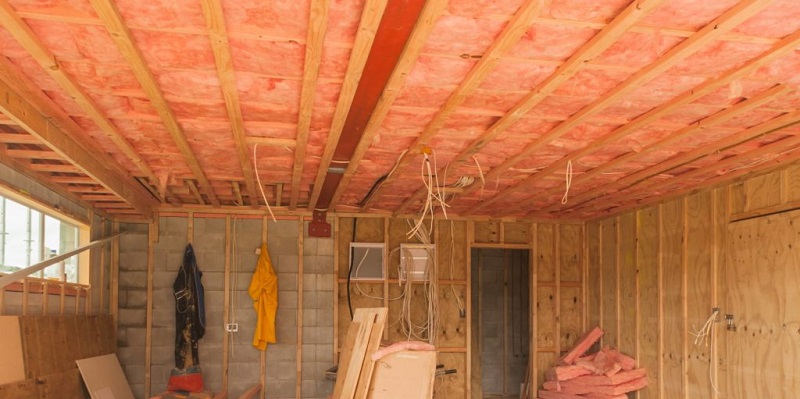
Challenges of Installing Fiberglass Insulation Around Electrical Outlets
Installing fiberglass insulation around electrical outlets on exterior walls presents several challenges that need to be addressed to maintain the insulation’s effectiveness. These challenges primarily include dealing with air leaks, ensuring the insulation is not compressed, and maintaining full coverage around the outlets.
Air Leaks and Temperature Differences
One of the main challenges when installing fiberglass insulation around electrical outlets on exterior walls is dealing with air leaks. Air leaks can occur around outlets, leading to drafts and significant heat loss, which can undermine the insulation’s effectiveness. This issue is particularly pronounced in older buildings where outlets may not be properly sealed.
To address air leaks, it’s crucial to ensure that the insulation is installed in a way that completely surrounds the outlet without leaving gaps. The use of additional materials, such as outlet gaskets or foam sealants, can help to create an airtight seal around the outlet, preventing drafts and improving the overall energy efficiency of the building.
Avoiding Compression of Insulation
Another common challenge is avoiding the compression of fiberglass insulation around electrical outlets. Compression reduces the insulation’s effectiveness by decreasing its R-value, which is the measure of the insulation’s resistance to heat flow. When insulation is compressed, it loses its ability to trap air, which is essential for its insulating properties.
To avoid compression, it’s important to carefully cut the insulation to fit snugly around the outlet without forcing it into the space. This can be achieved by measuring the outlet’s size and shape and making precise cuts in the insulation to ensure it fits properly without being compressed.
Where to Use Vinyl Backed Fiberglass Insulation in Construction
Techniques for Insulating Around Electrical Outlets
Proper techniques for insulating around electrical outlets are crucial for ensuring that the insulation is effective and that the electrical outlets are safe and functional. The following methods detail how to install fiberglass insulation around electrical outlets without compromising the insulation’s performance.
Cutting and Fitting Fiberglass Insulation Around Outlets
One of the most effective techniques for installing fiberglass insulation around electrical outlets is to carefully cut and fit the insulation around the outlet. This process involves measuring the outlet’s dimensions and making precise cuts in the insulation to ensure it fits snugly around the outlet without being compressed.
To begin, measure the height and width of the outlet box and mark these dimensions on the insulation. Using a sharp utility knife, cut out a section of the insulation that matches the size of the outlet box. It’s important to make clean, precise cuts to avoid damaging the insulation or leaving gaps that could lead to air leaks.
Once the insulation has been cut to the correct size, it can be gently placed around the outlet box. Care should be taken to ensure that the insulation is not forced into place, as this could compress it and reduce its effectiveness. Instead, the insulation should be placed so that it fits snugly around the outlet, with the fibers of the insulation remaining fluffy and in contact with the surrounding wall cavity.
Notching Fiberglass Insulation to Fit Around Outlets
In some cases, notching the insulation may be necessary to fit it properly around electrical outlets. This technique involves cutting a notch or a small section out of the insulation to allow it to fit around the outlet without leaving gaps or compressing the material.
To create a notch, first, measure the outlet’s location on the wall and mark this on the insulation. Then, using a utility knife, carefully cut out a small section of the insulation to accommodate the outlet box. This notch should be just large enough to fit around the outlet without leaving any gaps.
Once the notch has been cut, the insulation can be placed around the outlet. The notched section should fit snugly around the outlet box, with the remaining insulation filling in the space around it. This method ensures that the insulation remains in contact with the wall cavity, maintaining its effectiveness and preventing air leaks.
Lay Fiberglass Insulation Over Electrical Wires in Walls
Understanding the interaction between fiberglass insulation and electrical wires is essential for ensuring both safety and insulation effectiveness. When installing fiberglass insulation around electrical outlets, it’s common to encounter electrical wires, which can present challenges for maintaining the insulation’s R-value and avoiding potential fire hazards.
Safety Considerations When Laying Insulation Over Electrical Wires
One of the key concerns when laying fiberglass insulation over electrical wires is safety. Electrical wires generate heat, and if the insulation is not installed properly, there is a risk of fire. Additionally, improper installation can lead to insulation compression, reducing its effectiveness and potentially damaging the electrical wiring.
When laying fiberglass insulation over electrical wires, it’s important to ensure that the insulation does not compress the wires. Compression can reduce the airflow around the wires, increasing the risk of overheating. To prevent this, the insulation should be installed in a way that allows it to fit around the wires without pressing them against the wall or other surfaces.
Proper Techniques for Installing Fiberglass Insulation Around Electrical Wires
To safely install fiberglass insulation around electrical wires, several techniques can be used. One of the most effective methods is splitting or filleting the insulation to allow it to fit around the wires without compressing them.
Splitting the Insulation
Splitting the insulation involves cutting the insulation lengthwise to create a space for the electrical wires. This method allows the insulation to be placed around the wires without compressing them, maintaining the insulation’s effectiveness and ensuring safety.
To split the insulation, begin by laying the insulation flat and identifying the location of the wires. Using a utility knife, carefully cut along the length of the insulation, creating a slit just wide enough to accommodate the wires. The slit should be deep enough to allow the wires to sit inside the insulation without being compressed.
Once the insulation has been split, it can be placed around the wires. The split section should be positioned so that the wires are nestled inside the insulation, with the fibers of the insulation remaining fluffy and in contact with the surrounding wall cavity.
Filleting the Insulation
Filleting the insulation is another effective technique for installing fiberglass insulation around electrical wires. This method involves cutting a small section out of the back of the insulation to create a space for the wires, allowing the insulation to fit around the wires without compressing them.
To fillet the insulation, begin by laying the insulation flat and marking the location of the wires. Using a utility knife, carefully cut out a small section of the insulation from the back, creating a channel for the wires. The cut should be just deep enough to accommodate the wires without compressing the insulation.
Once the insulation has been filleted, it can be placed around the wires. The filleted section should be positioned so that the wires sit inside the channel, with the remaining insulation filling in the space around them. This method ensures that the insulation remains in contact with the wall cavity, maintaining its effectiveness and preventing air leaks.
Insulating Electrical Outlets on Exterior Walls
Insulating electrical outlets on exterior walls presents additional challenges compared to interior walls. Exterior walls are exposed to the elements, making it essential to ensure that the insulation is installed properly to prevent air leaks, drafts, and heat loss.
Challenges of Exterior Wall Insulation
Exterior walls are subject to temperature fluctuations, moisture, and air infiltration, all of which can affect the performance of fiberglass insulation around electrical outlets. If the insulation is not installed correctly, it can lead to drafts, increased energy costs, and reduced comfort levels in the building.
One of the main challenges of insulating electrical outlets on exterior walls is dealing with air leaks. Air leaks can occur around the outlet box, allowing cold air to enter the building and warm air to escape. This not only reduces the effectiveness of the insulation but also increases energy consumption.
Another challenge is ensuring that the insulation is not compressed around the outlet. Compression reduces the insulation’s R-value, decreasing its ability to resist heat flow and making the building less energy efficient.
Best Practices for Insulating Exterior Walls
To effectively insulate electrical outlets on exterior walls, several best practices can be followed. These practices ensure that the insulation remains effective, that air leaks are prevented, and that the building remains energy efficient.
Using Foam Board Insulation
One of the most effective methods for insulating electrical outlets on exterior walls is to use foam board insulation. Foam board insulation is rigid, providing excellent thermal resistance and helping to prevent air leaks around the outlet.
To install foam board insulation around an outlet, begin by measuring the size of the outlet box and cutting a piece of foam board to fit. The foam board should be slightly larger than the outlet box to ensure a snug fit. Once the foam board has been cut, it can be placed around the outlet, with the edges of the board sealing against the wall.
In some cases, it may be necessary to cut notches in the foam board to accommodate electrical wires or other obstructions. This can be done using a utility knife, with care taken to avoid damaging the insulation or leaving gaps.
Once the foam board is in place, the remaining wall cavity can be filled with fiberglass insulation. The fiberglass insulation should be installed so that it is in full contact with the wall cavity, with the foam board providing an additional layer of insulation and preventing air leaks around the outlet.
Key Fiberglass Insulation Manufacturers Leading the Market
Installing Fiberglass Insulation Around Electrical Outlets Precautions
When it comes to installing fiberglass insulation around electrical outlets, proper techniques are essential to ensure that the insulation maintains its effectiveness without interfering with electrical wiring or components. Electrical outlets present a challenge when insulating walls because of the wiring and space restrictions. By following correct practices, you can ensure energy efficiency and safety while working with insulation materials like fiberglass from GangLong Fiberglass.
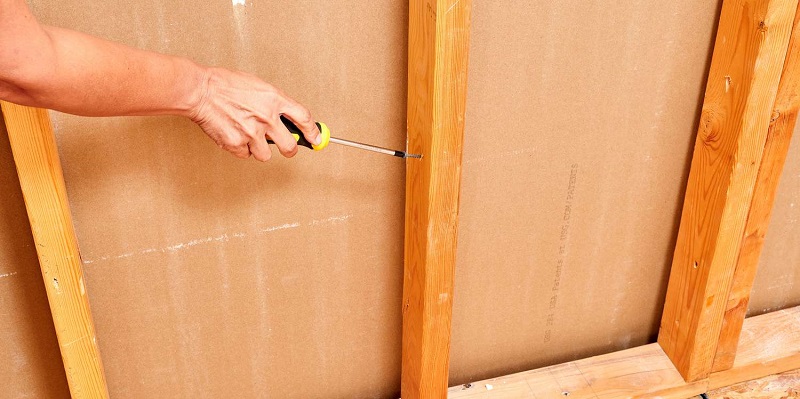
Fire Safety When Installing Fiberglass Insulation Around Electrical Outlets
Fire safety is a major consideration when working with fiberglass insulation around electrical outlets. Fiberglass is naturally fire-resistant, which makes it an ideal material for insulating areas near electrical wiring and outlets. However, improper installation can still pose a fire risk, particularly if the insulation is packed too tightly or is placed too close to the electrical components.
Maintaining Safe Distances
To ensure the safe installation of fiberglass insulation around electrical outlets, it’s important to maintain a safe distance between the insulation and the electrical components. While fiberglass itself does not burn, electrical outlets and wiring can generate heat, especially when used for high-power appliances. If the insulation is packed too tightly against these components, it could lead to overheating.
For safety, leave a small gap between the insulation and the electrical outlet to allow for air circulation. This helps to dissipate heat and reduces the risk of electrical components overheating. Using proper insulation techniques and maintaining safe clearances ensures that your home remains energy-efficient and fire-safe.
Using Vapor Barriers
In addition to maintaining proper clearances around electrical outlets, it’s a good idea to use vapor barriers when installing fiberglass insulation. A vapor barrier can help prevent moisture from accumulating inside the wall cavity, which is particularly important around electrical outlets. Moisture can lead to mold growth and other problems, so adding this extra layer of protection is a smart precaution.
Install the vapor barrier behind the fiberglass insulation, making sure it does not obstruct the outlet or wiring. This ensures that moisture is kept out of the wall cavity while allowing the insulation to do its job. GangLong Fiberglass offers products that are compatible with vapor barriers, making it easy to find the right combination for your needs.
The Key of Installing Insulation Behind Wires
When installing fiberglass insulation around electrical outlets, you’ll often encounter electrical wires running through the wall cavities. These wires need to be handled carefully to avoid disrupting the insulation or causing potential hazards. Fiberglass insulation can be fitted around wires with ease, but the right technique is essential to avoid compressing the material or damaging the wiring.
Splitting the Insulation
One effective technique for fitting insulation around wires is to split the fiberglass insulation. This method ensures that the insulation surrounds the wires without being compressed, which helps to maintain its R-value.
Start by cutting a small slit in the insulation where the wire is located. Gently pull the insulation apart so that one half of it sits behind the wire and the other half rests in front. This technique allows the insulation to cover the entire wall cavity, including the space around the wire, without compromising its effectiveness. Once the insulation is split and fitted around the wire, press it into place, ensuring full contact with the wall cavity.
Avoiding Compression
When working with fiberglass insulation around electrical outlets and wires, it’s crucial to avoid compressing the insulation. Compression reduces the material’s effectiveness by decreasing its ability to trap air and provide thermal resistance. Insulation needs to remain fluffy and uncompressed to perform at its best.
By carefully splitting the insulation and gently fitting it around the wires, you can ensure that the material retains its full insulating properties. Take your time during this process to avoid overstuffing the wall cavity or crushing the insulation against the wires or electrical outlet.
How About Insulating Around Switches and Outlets in Older Homes
Older homes often present additional challenges when insulating around electrical outlets. The wiring in older homes may not be as up-to-date, and the outlets themselves could be more prone to drafts and energy loss. When working with fiberglass insulation around electrical outlets in an older home, it’s important to assess the condition of the wiring and electrical boxes before proceeding.
Assessing the Wiring
Before installing insulation, check the condition of the wiring around the outlets. Older wiring may be more fragile or may not be up to current electrical codes, which could increase the risk of fire or electrical problems. If you notice any frayed or damaged wires, it’s a good idea to have an electrician inspect the wiring before proceeding with the insulation project.
Once the wiring is assessed, proceed with installing fiberglass insulation as usual, taking care to follow all safety guidelines. Ensure that the insulation is properly fitted around the outlets and wiring without compressing the material or obstructing the electrical components.
Choosing the Right Fiberglass Insulation for Electrical Outlets
Selecting the right fiberglass insulation is crucial for achieving optimal results when insulating around electrical outlets. Different insulation products offer varying levels of thermal resistance, fire safety, and ease of installation. For this type of project, GangLong Fiberglass offers a wide range of fiberglass insulation products suitable for walls, outlets, and wiring.
R-Value Considerations
The R-value of fiberglass insulation is an important factor to consider when choosing the right product. R-value measures the material’s ability to resist heat flow, and higher R-values offer greater insulation performance. For walls with electrical outlets, it’s important to select an insulation product that offers the appropriate R-value for your climate zone and the specific needs of your home.
GangLong Fiberglass offers fiberglass insulation with a variety of R-values, ensuring that you can find the right product for your specific project. Make sure to choose insulation that is thick enough to provide adequate thermal resistance but not so thick that it compresses around the outlets and wiring.
By following these techniques and selecting the right materials, you can successfully install fiberglass insulation around electrical outlets while ensuring energy efficiency and safety. Proper installation techniques help protect your home from drafts, energy loss, and potential fire hazards.
Why Choose Fiberglass Insulation for Ductwork: Key Advantages
FAQs about Fiberglass Insulation around Electrical Outlets
Spray foam insulation can be used around electrical outlets, but it must be done with caution. While spray foam provides excellent air sealing and insulation, it can expand significantly and potentially cover or obstruct the outlet. This expansion could cause overheating if the foam contacts electrical wires or outlets improperly. To use spray foam safely, ensure that you apply it carefully around the outlets, avoiding direct contact with the electrical components. It’s advisable to use an electrician-approved foam product designed for use around electrical outlets. Additionally, check local building codes and regulations to ensure compliance. If you are unsure about the application process, consider consulting with a professional to ensure both effective insulation and safety.
Insulation can be safe around electrical wires if installed properly and if certain precautions are taken. The key is to use materials that are rated for use around electrical wiring and to ensure that the insulation does not compromise the wire’s function. For instance, traditional fiberglass insulation is safe to use around properly insulated electrical wires, as it does not conduct electricity and is fire-resistant. However, it’s crucial to avoid packing insulation too tightly around wires, as this can create heat buildup and potentially lead to overheating. Always ensure that insulation does not obstruct access to electrical panels or junction boxes. To ensure maximum safety, follow local building codes and consult with a professional electrician when installing insulation near electrical components.
Fiberglass insulation can touch electrical wires, but there are important considerations to keep in mind. Fiberglass is generally safe to use around electrical wiring as it is non-combustible and does not conduct electricity. However, it is essential to ensure that the wires are properly insulated and in good condition. Over time, wires can become damaged, and if fiberglass insulation comes into direct contact with exposed or damaged wires, it could potentially cause issues. It is important to maintain proper installation practices and check that wires are correctly covered with appropriate insulation. If in doubt, consult an electrician to verify that your installation is safe and meets all electrical codes and standards.
Yes, you can put insulation around electrical outlets, but care is needed to maintain safety. Use insulation such as fiberglass batts, ensuring it is trimmed to fit snugly around the outlet box without being compressed. Avoid covering the electrical box directly to prevent overheating. To improve safety and reduce drafts, consider installing foam outlet gaskets or outlet covers, which help seal air gaps without interfering with the electrical components. Always adhere to local building codes and consult a licensed electrician for guidance on installation to avoid potential risks like fire hazards.
Fiberglass insulation is non-flammable because it is made from glass fibers that resist ignition. However, the paper or foil backing sometimes found on fiberglass batts can be combustible. Check the product’s label for fire resistance information and ensure any exposed backing meets fire safety requirements. In high-temperature environments, alternative insulation materials may be more suitable to avoid risks.
Fiberglass insulation can be used around pipes, but the type of pipe and the environment should guide your approach. For hot water pipes, use high-temperature-rated fiberglass to reduce heat loss. For cold water pipes, ensure the insulation prevents condensation, which can lead to mold. Avoid compressing the insulation as it reduces effectiveness. Proper installation protects pipes from freezing in cold climates and saves energy.
Yes, insulation can be laid over electrical wires, but care must be taken. Fiberglass batts can be split and laid around wires, allowing them to rest in the middle of the batt. Never compress insulation as it reduces thermal efficiency and risks overheating wires. Consult building codes to ensure compliance with safety standards, and work with an electrician when needed.
Exposed fiberglass insulation is generally not a fire hazard, as the glass fibers are non-combustible. However, if the insulation has paper or foil backing, it can pose a fire risk if left exposed. Always cover insulation with drywall or another fire-resistant barrier, as building codes typically require it to reduce potential hazards.
Pink fiberglass insulation, like other fiberglass types, is fire-resistant but not entirely fireproof. It withstands high temperatures without igniting, but any attached kraft paper or foil facing may burn. Ensure proper installation and cover exposed insulation with a fire-resistant material to enhance safety.
To install fiberglass insulation around electrical wiring, carefully split the batt along its thickness to wrap wires in the middle. Alternatively, fit batts behind and around wires without compressing them. Maintain a gap around electrical boxes to prevent overheating, and use fire-resistant materials where necessary. Consult local codes and safety guidelines.
Fiberglass insulation can irritate the skin, eyes, and respiratory system during handling. Inhalation of fibers may lead to temporary respiratory issues. Always wear protective gear, including gloves, goggles, and a mask. Long-term exposure risks are low if installed correctly, but precautions should be taken during handling.
Fiberglass insulation may not be ideal for some projects due to potential skin and respiratory irritation during installation, reduced effectiveness if compressed or improperly installed, and moisture retention, which can promote mold. Alternatives like spray foam or cellulose insulation may be better for areas requiring a moisture barrier or airtight seal.

As the editor of GangLong Fiberglass, I have years of experience and in-depth research, focusing on cable tray products, fiberglass solutions, and grille systems. I incorporate years of industry insights and practical experience into every content, committed to promoting the progress of the industry. At GangLong Fiberglass, my commitment is reflected in every product, from innovative cable trays to durable fiberglass solutions and sturdy grille systems. As an authoritative voice in the industry, my goal is to provide valuable information to professionals and businesses and promote forward-looking solutions.

